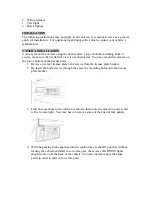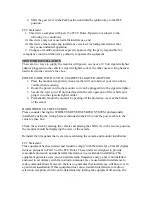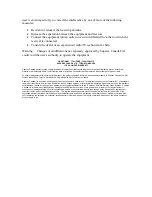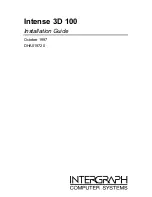
6.
Shift the gear lever in the Park position and turn the ignition key to the OFF
position.
FCC Statement:
1.
This device complies with part 15 of FCC Rules. Operation is subject to the
following two conditions
(1)
this device may not cause harmful interference, and
(2)
this device must accept any interference received, including interference that
may cause undesired operation
2.
Changes or modifications not expressly approved by the party responsible for
compliance could void the user’s authority to operate the equipment.
MONITOR INSTALLATION
There are two ways to supply the monitor with power, one uses a 12 Volt cigarette lighter
adaptor plugged into the vehicle’s cigarette lighter socket, the other uses a wiring harness
hard wired to the vehicle’s fuse box.
POWER CABLE WITH 12 VOLT CIGARETTE LIGHTER ADAPTOR
1.
Place the monitor temporarily in an area that will not obstruct your vision but is
visible when reversing.
2.
Route the power cord to the monitor so it can be plugged in to the cigarette lighter.
3.
Secure the cord so it will not interfere with the safe operation of the vehicle and
plug it in to the cigarette lighter outlet.
4.
Permanently mount the monitor by peeling off the protective cover at the bottom
of the stand.
HARD WIRED TO THE FUSE BOX
Please consider having the WIRELESS REVERSE VIDEO SYSTEM professionally
installed by using the wiring harness included in the kit to route the power cable to the
vehicle’s fuse box.
Check the system by starting the vehicle and placing the shift lever in the reverse position,
the monitor should be displaying the view of the camera.
Reinstall the trim panels that were removed during the camera and monitor installation.
FCC Statement:
This equipment has been tested and found to comply with the limits for a Class B digital
devices, pursuant to Part 15 of the FCC Rules. These limits are designed to provide
reasonable protection against harmful interference in a residential installation. This
equipment generates, uses, and can radiate radio frequency energy and, if not installed
and used in accordance with the instruction manual, may cause harmful interference to
radio communications. However, there is no guarantee that interference will not occur in
a particular installation. If this equipment does cause harmful interference to radio or
television reception, which can be determined by turning the equipment off and on, the























